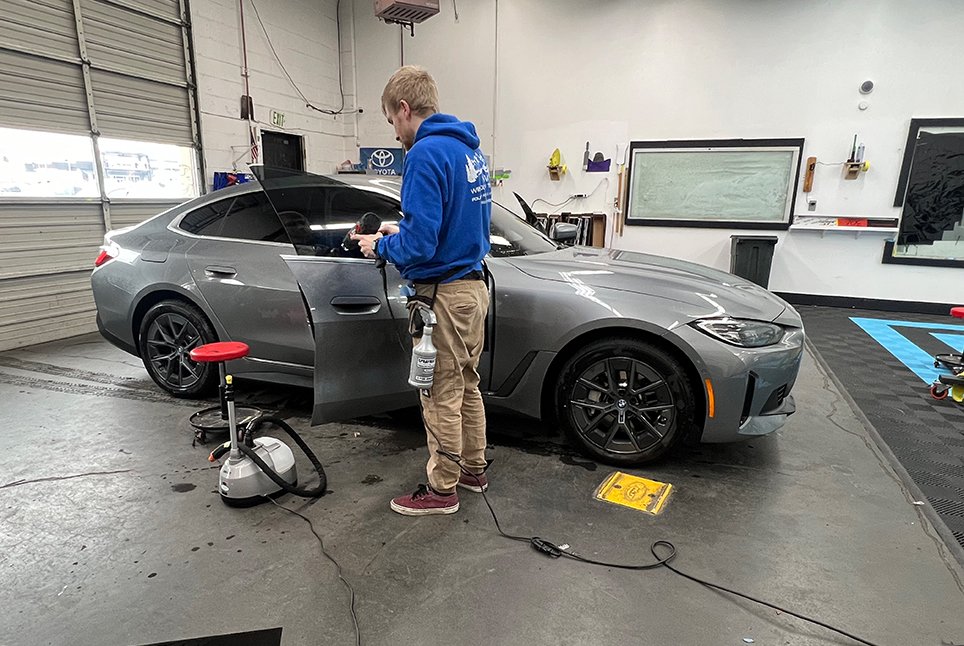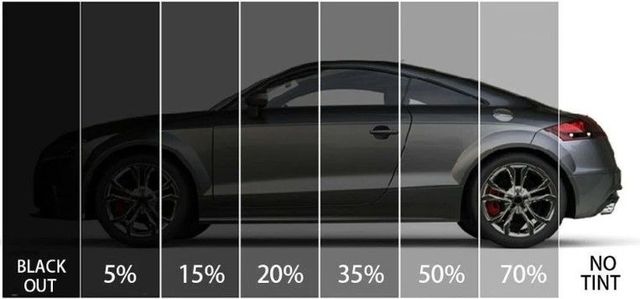Exactly How Car Window Tinting Can Enhance the Resale Value of Your Car
Exactly How Car Window Tinting Can Enhance the Resale Value of Your Car
Blog Article
Window Tinting Laws and Standards: What You Required to Know Prior To Tinting Your Automobile
Prior to waging home window tinting for your car, it is vital to familiarize yourself with the diverse legislations and standards that govern this practice throughout different states. These regulations dictate the allowable levels of color darkness, frequently determined by visible light transmission (VLT) percents, and consist of particular specifications for front windshields focused on making sure road safety and security. Furthermore, specific jurisdictions may supply medical exceptions for individuals with certifying problems. Recognizing these complexities can conserve you from prospective legal implications, but what are the specific guidelines in your state?
Summary of Home Window Tinting Laws
Window tinting legislations are often based on variant throughout various jurisdictions, reflecting local guidelines and safety considerations. These regulations determine the permissible degrees of tint darkness and reflectiveness on vehicle home windows, making sure that vehicle drivers preserve sufficient exposure while likewise protecting versus damaging UV rays and warmth.
Most guidelines identify window tinting based on the Visible Light Transmission (VLT) percent, which indicates the amount of light that can pass with the window. Typically, reduced VLT percents signify darker tints. Regulations usually distinguish between the front, side, and back windows, with more stringent constraints used to the front windscreen to boost safety and security for both the driver and other roadway individuals.
Compliance with window tinting policies is critical, as violations can result in penalties, compulsory removal of the color, and potential increases in insurance premiums. It is necessary for car owners to familiarize themselves with local laws before continuing with home window tinting installments.
State-by-State Color Laws
Recognizing the particular home window tinting policies in each state is vital for automobile proprietors looking for to follow the regulation. Each state in the united state has established its very own set of rules controling window tinting, which can differ considerably. These guidelines frequently dictate the allowed levels of color darkness, the sorts of windows that can be tinted, and any kind of clinical exceptions that may apply.
As an example, states like California have stringent constraints on tint darkness for front home windows, while others, such as New Mexico, may allow darker colors. Furthermore, specific states mandate specific visibility portions for numerous home windows, including the windshield, front side home windows, and rear windows. It is important for automobile proprietors to familiarize themselves with their state's regulations to prevent possible penalties or fines.
Moreover, some states may require a certification sticker label to be positioned on colored home windows, indicating compliance with state laws. Failing to stick to these laws not just takes the chance of lawful repercussions but can also influence safety and presence while driving. Therefore, car owners need to perform detailed research study or seek advice from local authorities to make sure full understanding and compliance with state-by-state tint laws.
Allowed Tint Levels and Types
Lots of car proprietors might be shocked to discover that enabled color degrees and types differ extensively across different states. Each state has actually established its very own guidelines concerning the permissible darkness and reflectivity of window color, frequently measured by Visible Light Transmission (VLT) percentages. VLT describes the quantity of light that can pass through the colored home windows; hence, a lower percent suggests a darker tint.

Furthermore, the sorts of color materials permitted can vary, with some states restricting mirror-like or metallic coatings. It is important for lorry proprietors to acquaint themselves with their state's particular legislations to ensure conformity. Non-compliance can result in fines, necessary elimination of the color, or various other legal repercussions, making it essential to understand these policies prior to continuing with setup.
Medical Exemptions for Tinting
While not all states supply allocations for medical exceptions concerning home window tinting, those that do acknowledge the requirement for particular people to enhance visibility and comfort because of medical conditions. Various medical conditions, such as lupus, skin cancer cells, and specific eye problems, can render people particularly conscious sunshine. These individuals might require darker colors to secure themselves from damaging UV rays and glare.

It is necessary to keep in mind that even with a medical exception, there might still be limitations on the degree of tint enabled. Conformity with state legislations makes certain that individuals are both protected and visit the site within lawful limits. Those taking into consideration medical exemptions need to call their neighborhood Division of Motor Vehicles or equal authority to comprehend the procedures and requirements required to request an exception efficiently.
Charges for Non-Compliance
Falling short to comply with window tinting laws can lead to substantial penalties, which vary by state. Police are equipped to provide citations for lorries that do not follow the defined tinting regulations. These charges typically include penalties, which can range from modest quantities to numerous hundred dollars, depending upon the extent of the offense and the state in question.
In some jurisdictions, duplicated offenses may lead to rising fines or added penalties, such as necessary court appearances. Additionally, non-compliance might necessitate the removal of prohibited tinting, commonly at the proprietor's cost. In severe cases, regular transgressors might deal with suspension of their car enrollment up until conformity is accomplished.
Additionally, insurance policy implications may develop from receiving several citations for window tint infractions. Insurers may see such infractions as a sign of riskier behavior, possibly resulting in increased premiums or trouble in coverage.
To stay clear of these charges, it is vital for automobile proprietors to acquaint themselves with their local window tinting regulations and guarantee that their vehicle complies (Window Tinting). This positive approach not just prevents legal ramifications but additionally promotes road safety
Final Thought

Most guidelines categorize home window tinting based on the Visible Light Transmission (VLT) percentage, which shows the amount of light that can pass with the home window. Conformity with window tinting policies is vital, as offenses can result in penalties, compulsory removal of the tint, and potential rises in insurance coverage premiums.Recognizing the details home window tinting guidelines in each state is essential for automobile owners seeking to comply with the law. These guidelines commonly dictate the allowable degrees of tint darkness, the kinds of home windows that can be tinted, have a peek at this website and any type of clinical exemptions that might apply.
For circumstances, states like California have rigid constraints on color darkness for front home windows, while others, such as New Mexico, might permit darker tints.
Report this page